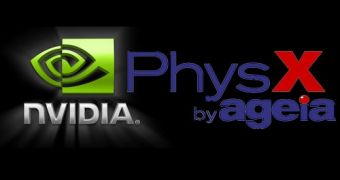Nvidia announced that it has almost completed the conversion of the Ageia physics engine to CUDA. The graphics expert even managed to run a particle demo that is somewhat similar to the fire test Intel ran on a Nehalem test shuttle earlier this month.
Nvidia took Intel's offensive seriously and is currently close to complete the conversion of its Ageia subsidiary to the CUDA development kit. Physics acceleration is becoming increasingly important on a market that spits realistic graphics games, and Nvidia holds the key to making them run even better.
Manju Hegde, co-founder and former CEO of Ageia, disclosed that the port of Ageia's technology to the CUDA development language is to be completed in a short time. The graphics specialist had to rewrite the stand-alone PhysX API and adapt it to its own development language for the GeForce 8 series and up, known as CUDA.
The company rushed to carry the port to completion, manly because of Intel's allegations that a powerful, multi-core CPU can substitute for the most advanced graphics card (except for its own Larrabee, of course). Nvidia responded to this offense with an home-brewed demo comprised of 65,000 simulated particles, which is strikingly similar to the Nehalem particle demo.
The preliminary results are amazing: while Intel's demo involved about 60,000 particles and was able to squeeze a constant frame rate of between 15 and 20 FPS, Nvidia's demo was run on a GeForce 9800 graphics core and managed to achieve 300 frames per second. More than that, the demo could even reach 600 frames per second in the upcoming Nvidia products (GT100/200).
Despite the fact that the Nehalem micro-architecture can run physics software by itself, the victory scored by Nvidia leaves no doubt on graphics' future. Nvidia managed to crush Intel on the graphics sector, and it was also able to deliver a performance boost over Ageia's own PhysX card, that would run the demo at just 150 FPS.

 14 DAY TRIAL //
14 DAY TRIAL //